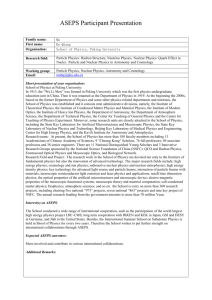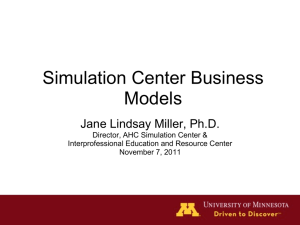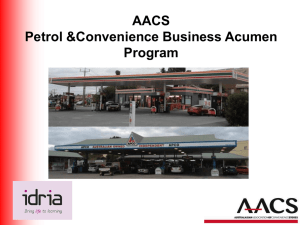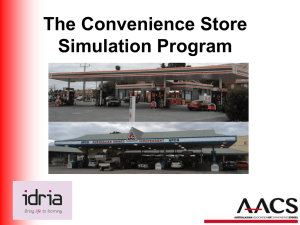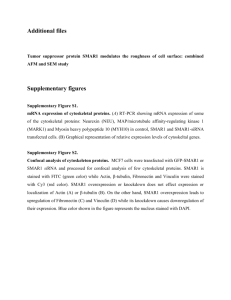modeling cells - The Department of Mathematics at Colorado
advertisement
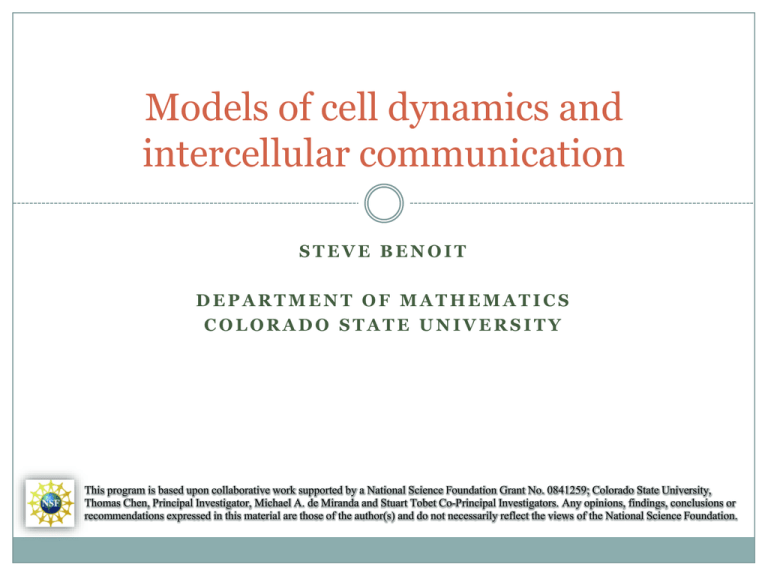
Models of cell dynamics and intercellular communication STEVE BENOIT DEPARTMENT OF MATHEMATICS COLORADO STATE UNIVERSITY This program is based upon collaborative work supported by a National Science Foundation Grant No. 0841259; Colorado State University, Thomas Chen, Principal Investigator, Michael A. de Miranda and Stuart Tobet Co-Principal Investigators. Any opinions, findings, conclusions or recommendations expressed in this material are those of the author(s) and do not necessarily reflect the views of the National Science Foundation. Modeling Cell Dynamics & Communication OUTLINE: Context – CSU research program Observing cell motion – phenomenology & analysis Modeling cell behavior – top-down vs. bottom-up New approaches at mesoscopic scale Results & discussion CSU Cell Communication Research Fluorescence Video Microscopy Analysis Optical Image Tissue Slice Preparation Tissue Sample Electrochemical Biosensor Development Data Acquisition & Processing Composite Image Biosensor Array Microchip Development Analysis Microchip Biomedical Sciences Chemistry Computer Science Mathematics Chemical Image Electrical & Computer Engineering Cell Motion Analysis from Optical Images Automated analysis tool: Z-planes Raw Image Merged Equalized Smoothed Stabilized Trajectories Analysis Cell Motion Analysis from Optical Images Automated analysis tool: Best-fit curves for model: ( r r ) 2 4 Kt α ≈ 1: diffusive behavior α < 1: subdiffusive behavior α > 1: superdiffusive behavior α=.42 α=.93 α=1.25 Voronoi diagram and visualizations: Voronoi α K Speed Distance Challenges of modeling cell behavior Cell mechanics: Actin Microfilaments Intermediate Filaments Membrane & Adhesion Organelles Microtubules Challenges of modeling cell behavior Examples of cell motion & signaling: Neutrophil Macrophage Neuron T Cells Examples of cell mechanics: Actin motility Actin-Induced Movement Microtubule Dynamics Adhesion History: “Top-Down” Models Continuum model of cell concentration (e.g. Keller & Segel -1971) Random walk with bias (e.g. Alt – 1980) Stochastic model (e.g. Tranquillo – 1988) Hyperbolic continuum model (e.g. Hillen & Stevens - 2000) History: “Bottom-Up” Models Molecular dynamics models (~ 7x1015 atoms per cell) Membrane models Cytoskeleton models Adhesion modulation models Mechanical Components Models for Mesoscopic Simulation Plasma Membrane Energy Functional Terms: Axial displacement Normal averaging Radial Lennard-Jones Each disc acts as sensor ~500-1000 discs per cell Disc Model Triangulation Simulation Models for Mesoscopic Simulation Organelles Organelles are treated just as membranes Different energy parameters Interaction Terms: Simple Lennard-Jones Simulation Models for Mesoscopic Simulation Cytoskeleton Collection of Lennard-Jones spheres Interacts with other actin spheres and membrane discs Interaction Terms: Simple Lennard-Jones Models for Mesoscopic Simulation Cytoskeleton Dynamics & Signaling Membrane discs are activated by signals Actin spheres close to activated discs are activated / created Activated spheres grow (polymerize) then divide Global rate of sphere shrinkage (depolymerization) to restore monomer pool Simulation Directions for Future Work Parallelization and optimization Simulations with 1000-5000 cells Mitosos and apoptosis Boundary/interior conditions (ventricle, radial glia) Acknowledgements Colorado State University Tom Chen, Michael de Miranda CSU Biomedical Sciences Department and the Tobet Lab Stuart Tobet, Matt Stratton, Krystle Frahm, Brian Searcy CSU Department of Mathematics Vakhtang Putkaradze University of Ljubljana & Jožef Stefan Institute Primož Ziherl The author would like to thank the National Science Foundation for support under Grant No. 0841259.
